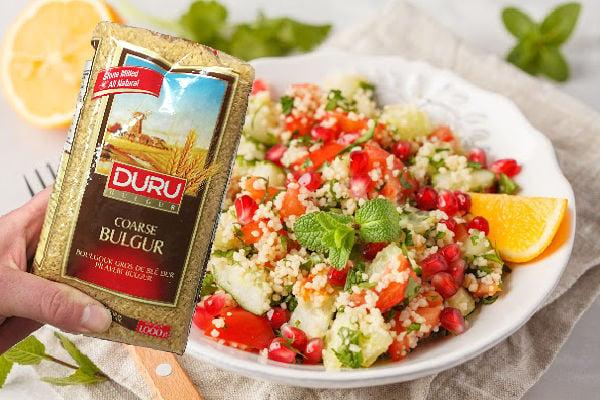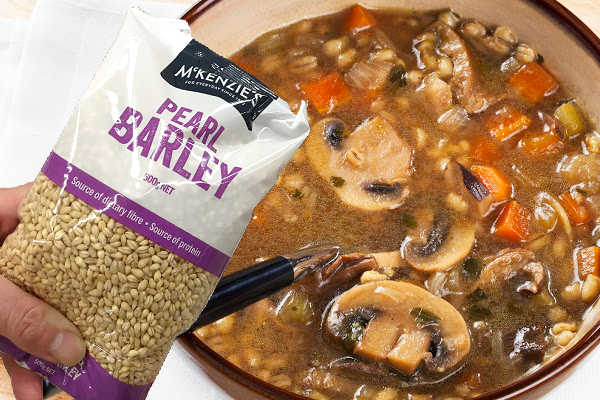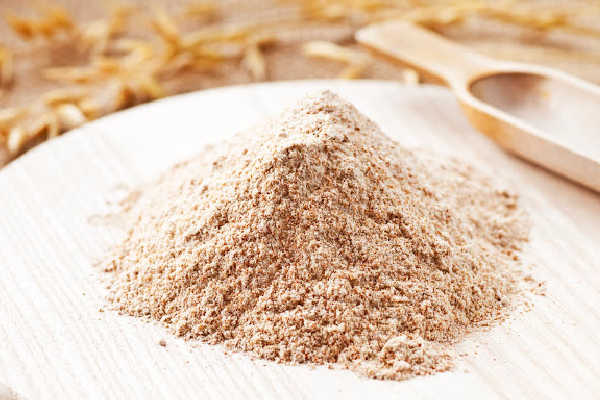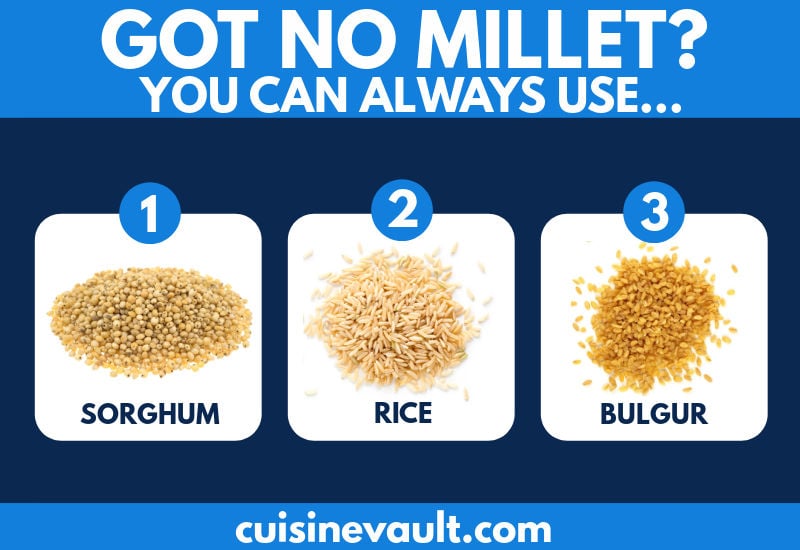Millet is a small ancient grain that is a staple ingredient in many parts of Africa and Asia. Although it is commonly used as birdseed in the United States, it is growing in popularity as a food for human consumption. This is largely thanks to the grain being gluten-free and containing reasonable levels of protein, antioxidants, and fiber.
If you’re looking for a millet substitute in your cooking then keep reading to find a suitable alternative. Whether you’re looking to swap the whole grain in a savory dish or replace millet flour in baking, we have the answers.
What can I use as a millet substitute?
To replace whole grain millet in recipes use sorghum, rice, bulgur, barley, quinoa, or amaranth as your best options. Although they have a subtle difference in flavor and texture, they can be used in much the same way, as a side dish or added to curries and stews to bulk up your food. To substitute millet flour with another gluten-free ingredient, add sorghum flour, buckwheat flour, or rice flour. Traditional wheat flour is also an option if you aren't on a gluten-free diet.
| Millet Substitute | Flavor |
|---|---|
| Sorghum | Nutty flavor similar to wheat berries. |
| Rice | Mild flavor and firm, chewy texture. |
| Bulgur | Nutty tasting and emits a pleasant popcorn-like aroma when cooked. |
| Barley | Mild nutty flavor with a chewy texture. |
| Quinoa | Slightly crunchy texture once cooked with fresh, mild taste. |
| Amaranth | Nutty flavor with a little crunch once cooked. |
| Buckwheat | Stronger tasting grain combining nutty, bitter, and earthy flavors. |
1. Sorghum
Sorghum is a popular livestock feed in the U.S. and is also a wholesome grain in cooking. Once cooked, it offers a mild nutty flavor similar to wheat berries and a lovely chewy texture perfect for soups. Millet is a little bland so you’ll find that sorghum has more flavor, but it won’t be out of place in any recipes that call for millet. Use it as a base for grain salads or sprinkled into pilafs to dial up the iron, fiber, and protein content.
If you decide to use sorghum as a replacement for millet then keep in mind that the cooking times are different. Although millet usually takes 30 minutes to boil, sorghum will require simmering for 50-60 minutes to soften. Add three cups of water for each cup of sorghum to ensure it doesn’t dry out.
2. Rice
Most people are familiar with the taste and texture of rice. Its mild flavor and firm, chewy texture make it a useful substitute for millet in savory dishes. For a healthier option, brown rice is preferable to white rice as it is less processed and offers more fiber.
Rice is a bigger grain than millet and if you need an alternate ingredient for dishes like soup then rice wouldn’t be our first choice. For a more authentic dish, use sorghum, buckwheat, or barley.
Recommended reading:
Can I freeze cooked rice?
12 rice cooking tips that work.
How many cups of rice in a pound?
3. Bulgur
Bulgur, or bulghur, is made from wheat groats that go through a process of parboiling, frying, and then grinding. Although there are a variety of wheat crops that can be used in making bulgur, it is usually made from durum wheat.
 Bulgur is nutty-tasting and emits a pleasant popcorn-like aroma when cooked. Its texture is chewy but will vary depending on the type of grain. Fine and medium grains are ideal for pilafs, breads, puddings, porridge, and salads. Pottages, also known as thick stews or soups, are better suited to coarse bulgur. Gazpacho is also excellent when bulgur is added.
Bulgur is nutty-tasting and emits a pleasant popcorn-like aroma when cooked. Its texture is chewy but will vary depending on the type of grain. Fine and medium grains are ideal for pilafs, breads, puddings, porridge, and salads. Pottages, also known as thick stews or soups, are better suited to coarse bulgur. Gazpacho is also excellent when bulgur is added.
Although bulgur is not free from gluten, it is packed with magnesium, iron, and manganese while being low in fat. If you decide to use bulgur as a substitute then make allowances for the shorter cooking time. It only requires 15 minutes to cook which is a big benefit for home cooks that are short on time.
4. Barley
Barley is a grain crop that is harvested globally and is often added to casseroles and soups. Like most of the grains listed on this page, barley has a mild nutty flavor with a chewy texture. To replace millet in your next slow-cooked meal then add pearl barley as it doesn’t need to be pre-soaked overnight before use.
 5. Quinoa
5. Quinoa
Another gluten-free whole grain is quinoa which is mild in flavor and has a slightly crunchy texture once cooked. It is excellent used as a side dish or you can add it to salads, burger patties, or buddha bowls. Quinoa also makes a useful bulking ingredient in stews and soups and is ideal for stir-fries. It will absorb the flavors from the other ingredients as well as boosting the dish’s protein content.
Quinoa cooks in half the time than millet does; it will only need 15 minutes of simmering in water before eating.
6. Amaranth
Amaranth is an excellent gluten-free grain that has similar properties to millet. It is another ancient grain that is popular in South American, China, and Africa. Although technically a grain, Amaranth is a tiny seed similar to a sesame seed that provides a nutty flavor and a little crunch once cooked.
7. Buckwheat
Buckwheat will make a good millet alternative for those that enjoy a stronger flavored grain. It combines nutty, bitter, and earthy flavor notes into one mouthful. The groats make an excellent side dish and provide authentic taste to many African slow-cooked dishes. They only require 10-12 minutes of simmering until tender.
Buckwheat groats can be roasted, soaked, and then simmered to make kasha, a type of porridge. To find out more about a similar cooked breakfast cereal, check out our article on farina.
What can I substitute for millet flour?
If you require a gluten-free replacement for millet flour in baking then use a mild-flavored option like rice flour, sorghum flour, amaranth flour, or montina flour. If you aren’t on a gluten-free diet then simply use a regular wheat flour which will work in any baking recipe.
Related reading: What are the best farro substitutes?
Fast facts about millet
- Millet grains and flour have become a more common ingredient in supermarkets and are available on the shelf at many health food stores.
- It is excellent toasted in a skillet to enhance the nutty flavor before cooking in liquid. Three cups of water are sufficient to cook one cup of the grain for 30 minutes.
- Millet is an annual, small-grained cereal that is drought-tolerant and belongs to the grass family.
- The highest consumer of millet is West Africa - it is an essential component of their diet.

Rice, sorghum, and amaranth flours are good substitutes for millet flour.
Final words
Millet is a useful grain in the kitchen and is growing in popularity in Western countries. This is mainly because of the focus on healthy eating and diets without gluten. If a recipe calls for millet grain then use sorghum, rice, bulgur, or barley as your best substitutes. While they won’t perfectly mimic the flavor and texture, they’ll still fit into most recipes.
What is your favorite grain that you use in cooking? Please let us know in the comments below.


Leave a Reply